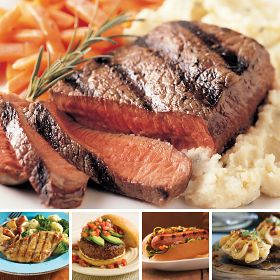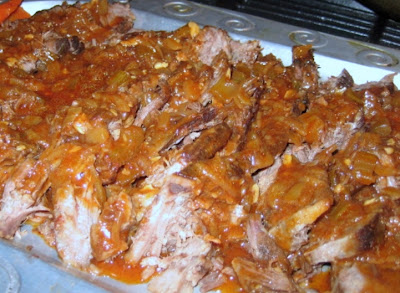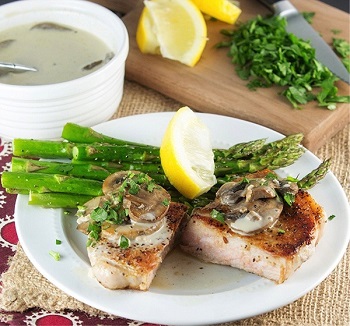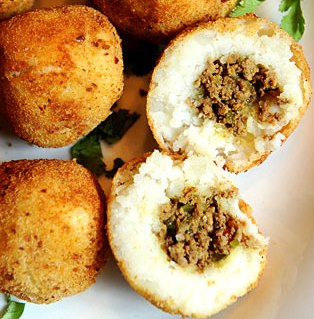We've all been there. You threw a dinner party and were gifted various fine wines that you and your friends just had to try out. They look fancy—one of them has alabel with an illustration of an orca whale breaching in the distance. The leftover wine sits on your counter half empty and by the time you pick it up to use in a beefy braise or stew, it’s been upward of a week. As you stare into the bottle, you can’t help but wonder: Does wine go bad?
 Does wine go bad?
Does wine go bad?
I hate to report that wine does go bad. It all has to do with oxidation, a chemical reaction that converts ethanol to acetaldehyde as a result of air exposure. It’s an essential part of winemaking. Oxidation can happen through introduction to air in the winemaking process, during fermentation, during aging time in the barrel, or during corking—it’s very normal!
As our professional sommelier explains, exposing certain wines to air is common practice to “let it breathe”. As she puts it, “We’re unlocking the aromas and waking up that bottle. But there is a shelf life, unless you want to turn it to actual vinegar, which one could do.” Oxidation can easily change the wine taste, increasing its levels of acetic acid and turning its flavors flat. The once-vibrant berry bouquet of your favorite Pinot Noir may start to smell stale and vinegary instead.
Lots of winemakers use sulfur preservatives to protect the wine from the oxidation process, so wines with less sulfur can turn vinegary more quickly. Bacteria can also interact with the open bottle of wine, causing spoilage and changing the flavor and viscosity.
How long is wine good after opening?
So how long does wine last after opening? Typically, an opened bottle of red wine, white wine, or rosé wine—depending on how much sulfur is in the bottle and proper wine storage—can last between three and five days. “People tend not to put reds in the fridge, so they may go a bit sour faster,” he explains. Sparkling wines, like champagne, go even quicker—just one to three days and it’s past its prime. The longer sparkling wine sits, the quicker it loses its carbonation.
Before you dump the wine, make sure to pour a glass and check out the color and smell. Look for changes in the vibrancy, and if the wine has turned cloudy or opaque, send it to the sink. And if the old wine smells like vinegar, or even as dramatic as wet cardboard or wet dog, that means over-oxidation or bacterial growth has occurred. “Separation anxiety is real, but you gotta let it go,” says the sommelier.
How should I store wine after opening it?
Now that you know wine’s shelf life, let’s talk proper storage. What is the right way to store wine? According to our professional sommelier, “All wines that have been opened should be recorked and put back in the refrigerator.” No matter the type of wine, store it in a cool and dark place—this will slow down any breakdown in the wine and limit its exposure to oxygen, heat, and light. Just remember to bring fuller bodied red wines back to room temperature before drinking.
Cuban Cookbook
A great Cuban recipe is at the heart of every
memorable meal. Browse our recipes for inspiration!

 Directions:
Directions:
We put the rice to cook in a pot with water, which should be twice the measure of rice, for about 10 minutes.
Meanwhile, in another pot or container that is sufficiently deep, over low heat add the milk with the sugar, the lemon peel and the cinnamon stick, stirring constantly to prevent it from sticking.
When it starts to boil, wait for 1 minute and remove the cinnamon. and the lemon peel.
Immediately add all the rice and let it boil for another 15 minutes, stirring constantly, until all the milk is absorbed, remember that it should not dry out too much.
Now remove it from the heat and serve it in a bowl or deep dish, sprinkling the cinnamon powder. It is preferably consumed cold.
Ingredients:
1 quart of milk
1 cup of rice
2/3 cup of sugar
Peel or skin of 1 lemon
1 cinnamon stick
2 tablespoons of ground cinnamon

Directions:
Boil the elbows in a pot with enough water and a pinch of salt, over high heat for 10 or 15 minutes until they are fully cooked.
While they boil, chop the ham, cheese and pineapple into small pieces, and reserve for later.
When the elbows are ready, drain them well and reserve in another dry container.
Now it is the turn to mix all the ingredients, the ham, the pineapple, the cheese, the elbows and the mayonnaise.
Ingredients:
1 Package of macaroni elbows
1 Cup of mayonnaise
1 pound of ham
1 pound of white cheese
1 pineapple
Olives (optional)
Salt to taste

Directions:
Combine cumin and garlic; press onto beef steaks. Place steaks on grid over medium, ash-covered coals. Grill, uncovered, 15 to 18 minutes for medium rare to medium doneness, turning occasionally.
Squeeze lime wedges over steaks. Carve steaks; season with salt. Serve with guacamole.
To broil: Place steaks on rack in broiler pan so surface of beef is 3 to 4 inches from heat. Broil 13 to 17 minutes for medium rare to medium doneness, turning once.
Ingredients:
2 Boneless beef strip steaks, cut 1-inch thick (1-1/4 lb.)
2 Teaspoons ground cumin
2 Cloves garlic, minced
2 Lime wedges
Salt to taste

The key to tender and juicy pork is to make sure that you aren’t over-cooking it. The sure-fire way to cook it just right is to use a meat thermometer. When the pork chops reach an internal temperature of about 145 (up to 160 degrees, but I found 145 to give me the perfect result), they are done! You’ll remove the pork chops from the pan and let them rest for about three minutes. The result will be a perfectly cooked, tender and juicy piece of pork with just a hint of pink in the center that you’ll find irresistible!
This is an easy and quick recipe that will delight. Serve with asparagus and compliment your meal with a bottle of Chardonnay, which goes perfectly with this recipe. More...
Every Cuban should be proud of its Ajiaco, one of the most delicious and distinctive culinary "Criollo" dishes. I think we can say that it is the soul of Cuba turned into delicacy. In it are synthesized more than 500 years of history, irreversible mixture of races, cultures and idiosyncrasies, which could not escape the kitchen.  This recipe is one of the many variations of the dish that we hope you'll enjoy.
This recipe is one of the many variations of the dish that we hope you'll enjoy.
Directions:
- Soak the tasajo overnight in cold water, changing the water at least twice. Remove the tasajo from the water and cut into 1-inch pieces.
- Cut the ribs into individual ribs. Cut the flank steak into 1 inch strips.
- Cut the pork into 1-inch pieces.
- Place the tasajo and ribs in a stock pot and cover with water. Season the water with salt and pepper.
- Cook the meat for about 1 hour or until the ribs are tender. Remove from the heat and drain.
- In a stock pot, heat the olive oil. When the oil is hot, add the onions, garlic, bell peppers, tomatoes, cumin, paprika, and black pepper.
- Saute the mixture for 2 to 3 minutes. More...
Cuban Stuffed Potatoes (Papas Rellenas) is a very popular Cuban dish, you can serve it as snack, lunch or dinner.

INGREDIENTS:
- 6 potatoes, peeled and quartered
- 1 tsp. salt & garlic powder
- Parsley for garnish
- 2 Tbsp. Warm milk
- Picadillo (you can find the recipe here) The picadillo is the filling for the Papas Rellenas.
- 2 eggs, beaten with 1 Tbsp. Water
- 2 cups breadcrumbs
- Oil for frying
DIRECTIONS:
- Boil potatoes until they are fully cooked More...
Directions:
Make the shrimp stock as per the instructions following.

Make the sauce. Use a 3-quart saucepan and melt the butter over medium-low heat until it just begins to brown.
Whisk in the flour quickly to make a smooth paste.
Add
1 cup shrimp stock and the wine, blending with your whisk to avoid any
lumps. Simmer over low heat, stirring constantly until the sauce
thickens. Remove from direct heat, but cover and keep warm for later.
Sauté the onion in the olive oil in a large sauté pan over medium heat, until it begins to soften.
Add the shrimp and continue to sauté for a minute or 2 only, flipping frequently (Do not overcook).
Add the tomatoes and the garlic and cook for an additional 3 to 5 minutes stirring occasionally. Salt and pepper to taste.
While
the shrimp is cooking, finish your sauce. Add the cream with a whisk
and blend in thoroughly. Increase heat to medium to bring the sauce up
to serving temperature. Stir constantly and do not let the sauce come to
a boil.
Remove sauce from heat and add the chopped fresh
cilantro. Pour the sauce over the shrimp and vegetables in the sauté
pan, turning with a spoon to blend.
Serve immediately over white rice.
INGREDIENTS:
2 1/2 pounds shrimp, peeled and deveined, reserve shells
1/2 stick of salted butter
1/4 cup flour
1 cup shrimp stock (as per the following recipe)
1/2 cup onion, chopped
1/4 cup olive oil
1 cup Italian tomatoes, seeded and chopped
4 cloves garlic, chopped
Salt and pepper to taste
1 cup heavy cream
1/4 cup white vermouth
1/3 cup fresh cilantro, chopped
SHRIMP STOCK RECIPE
Rinse
the shrimp shells under cold running water and place them in a 1-gallon
stockpot with the remaining ingredients. Bring the pot to a boil and
then lower the temperature to a simmer. Skim the impurities that rise to
the surface with a ladle, spoon or a skimmer. Simmer the stock for 45
minutes to 1 hour.
When the stock is completed, strain the
stockpot and immediately cool the stock using an ice bath of water and
ice. Use the amount of stock you need, and refrigerate or freeze the
rest.
The shells of the 2 1/2 pounds of shrimp
1 quarts plus 1 cup cold water
1/2 cup coarsely chopped onion
1/4 cup chopped carrots
1/4 cup chopped celery
1/4 tablespoon garlic, roughly chopped
1/2 cup mushroom trimmings
Sachet
consisting of the following: 1 bay leaf, 1/4 teaspoon dried thyme, 1/4
teaspoon crushed black peppercorns and 2 parsley stems
By mid-summer, drinking rosé day and night can tire even the most seasoned wine drinker. The obvious alternative is a dry and crisp white wine, but you’re truly missing out if you ignore light, chilled reds as your summer companion for barbecues and patio hangouts.
 An entire genre of young and refreshing red wines, largely coming from northern appellations in France, are an excellent answer to hot-weather drinking. In particular, certain French varieties like Gamay, Pineau d’Aunis, and Grolleau form the basis of these low-alcohol, high-acid, earthy red wines, which will quench your thirst without weighing you down. We’re talking about what the French call glou-glou or vin de soif—literally, wine for thirst. And they are best served with a chill.
An entire genre of young and refreshing red wines, largely coming from northern appellations in France, are an excellent answer to hot-weather drinking. In particular, certain French varieties like Gamay, Pineau d’Aunis, and Grolleau form the basis of these low-alcohol, high-acid, earthy red wines, which will quench your thirst without weighing you down. We’re talking about what the French call glou-glou or vin de soif—literally, wine for thirst. And they are best served with a chill.
Jason Wagner, wine director and partner at the Lower Manhattan restaurant Fung Tu, features several light reds at the restaurant, which serves rich and spicy Chinese cuisine. More...